2. Birth of Greek Art: Arch & Sculpt
1/24
There's no tags or description
Looks like no tags are added yet.
Name | Mastery | Learn | Test | Matching | Spaced |
|---|
No study sessions yet.
25 Terms

Standing Cycladic Figurine (2800-2200 BC)
made in marble
abstract form (easy to forge)
found in tombs
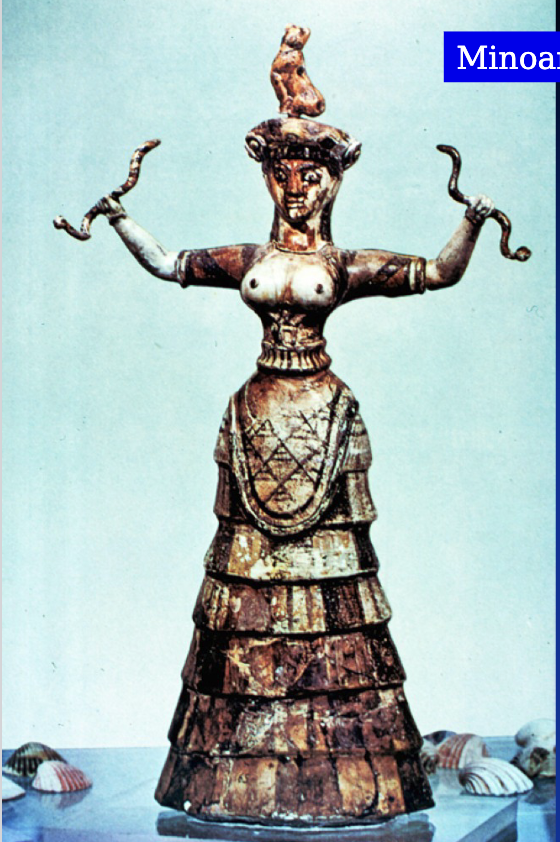
Minoan “Snake Goddess” frmo Palace at KNossos (1600-1580): Minoan Minor Arts
exaggerated proportions of the body: fertility
Minoan skill with faience glazing
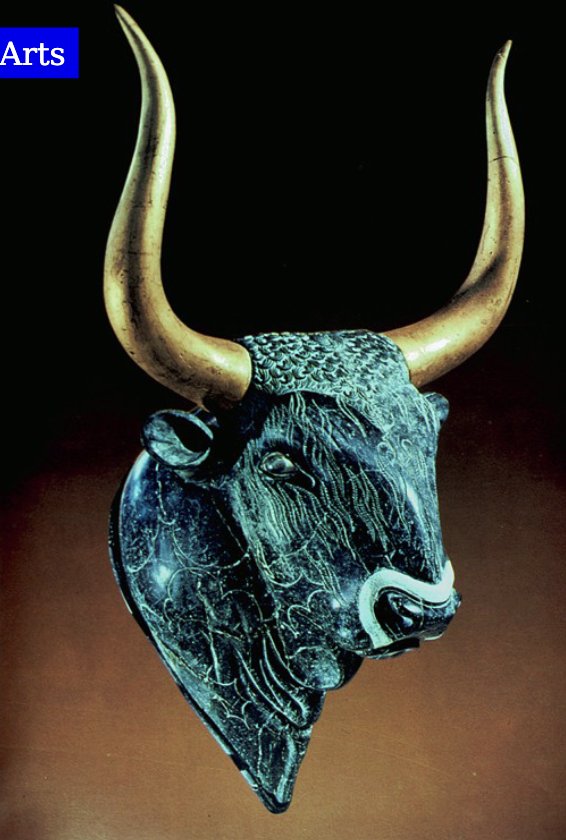
Minoan bull’s head rhyton: pouring vessel (1550-1550): minoan minor arts
used for libations
naturalistic, showing Minoan sculptural techniques
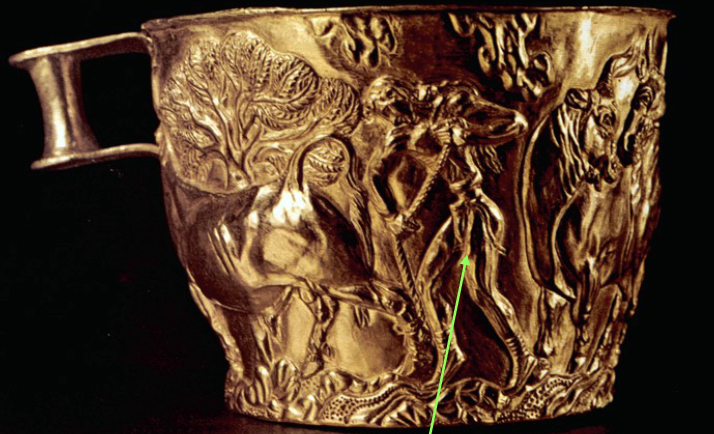
Mycenaean “Vapheio Cups”: from Vapheio in the Peloponnese (1500 BC): mycenaean minor arts
ceremonial drinking cups
two cups depict bulls in dynamic motion: one shows peaceful herding, and the other violent capture
either made by minoans or mycenaeans with minoan influence
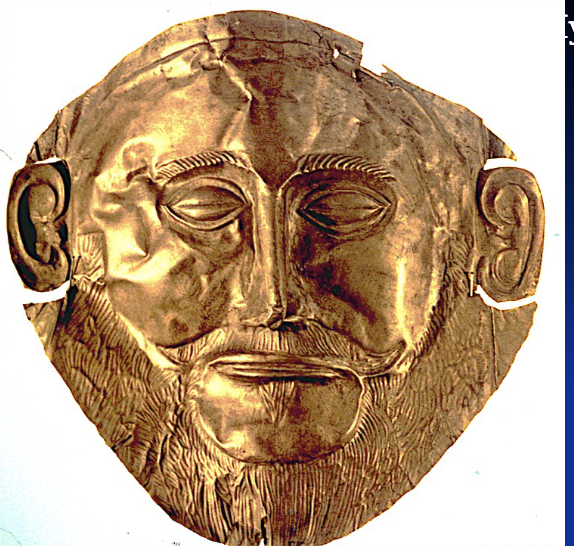
Mycenaean gold funerary mask “mask of Agamemnon (1600 BC) from Mycenae: Mycenaean minor arts
funerary mask, to cover face of the dead

Mycenaean lion’s head rhyton from Mycenae (1600 BC): Mycenaean minor arts
ritual pouring vessel (libation)
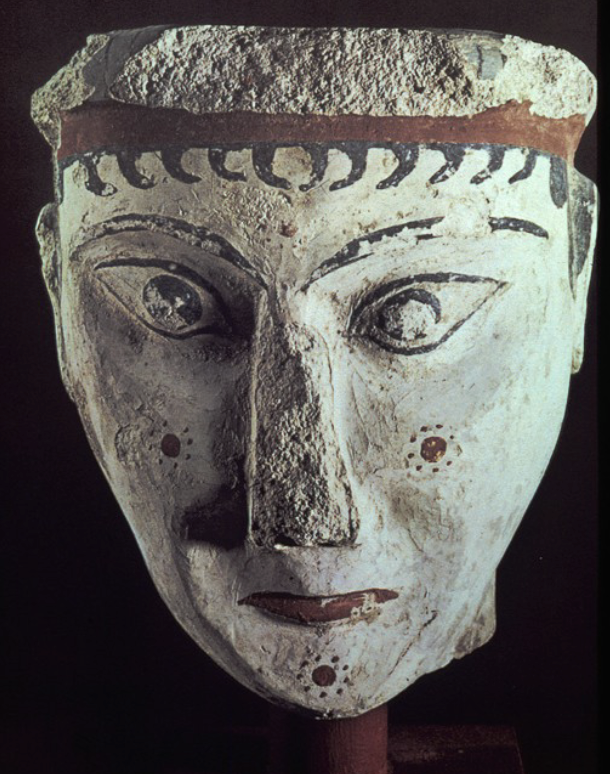
Mycenaean painted limestone head of a female from Mycenae (1300 BC)
votive figure, found in sanctuary (maybe a sphinx)
one of only examples of large-scale sculpture to have survived
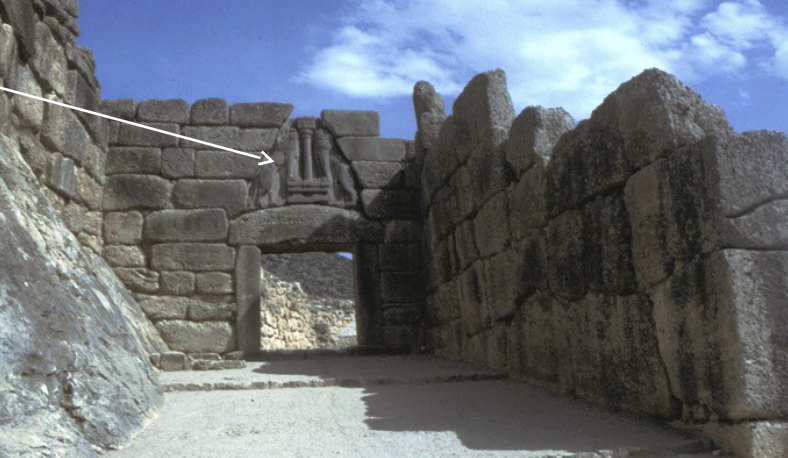
Mycenaean “Lion Gate” (main gateway to citadel of Mycenae 1250 BC)
largest surviving Mycenaean monumental sculpture
two heraldic lions, flanking a minoan style column
relieving triangle reduces weight on dorrway and leaves space for sculpture
column in the middle is minoan style, religious significance
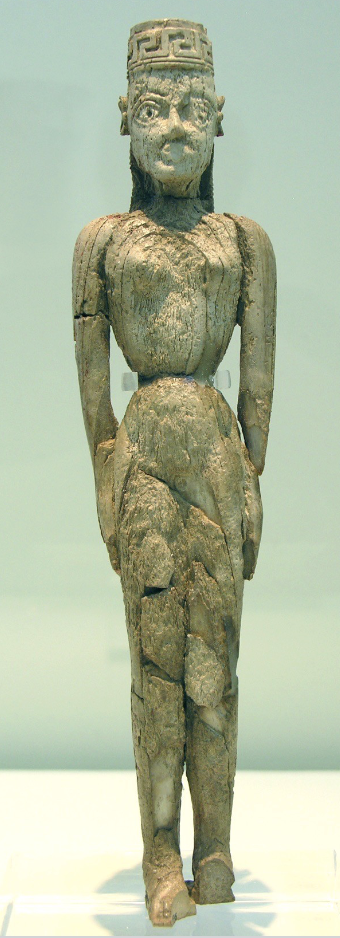
Ivory Votive Statuette of a Goddess (750 BC)
Similar to xoanon (“carved image”: refers to wooden cult statues) but not nude
early greek/ geometric period aesthetic
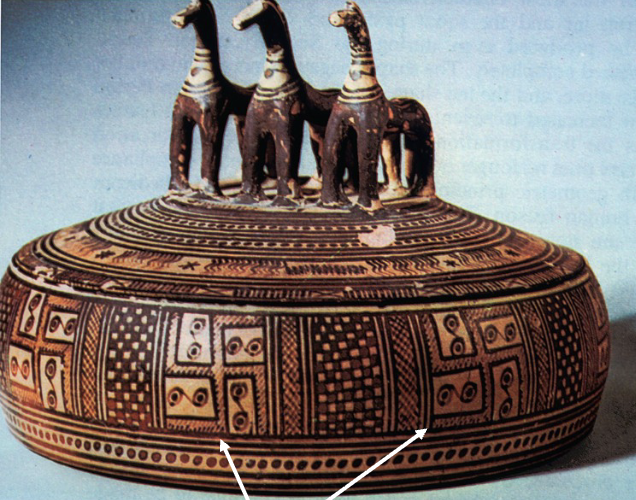
Pyxis with horse handle from Athens, 800 BC
Pyxis = cosmetic box
made in terracotta
swastika design: movement and energy
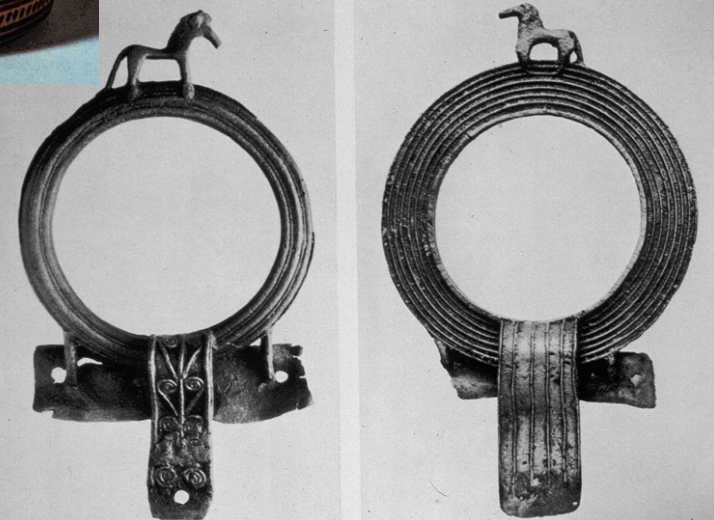
Bronze Tripod Cauldron Ring handles from Olympia (800 BC)
geometric period
votive or prize cauldrons
votive offering: gift to a god in keeping a vow
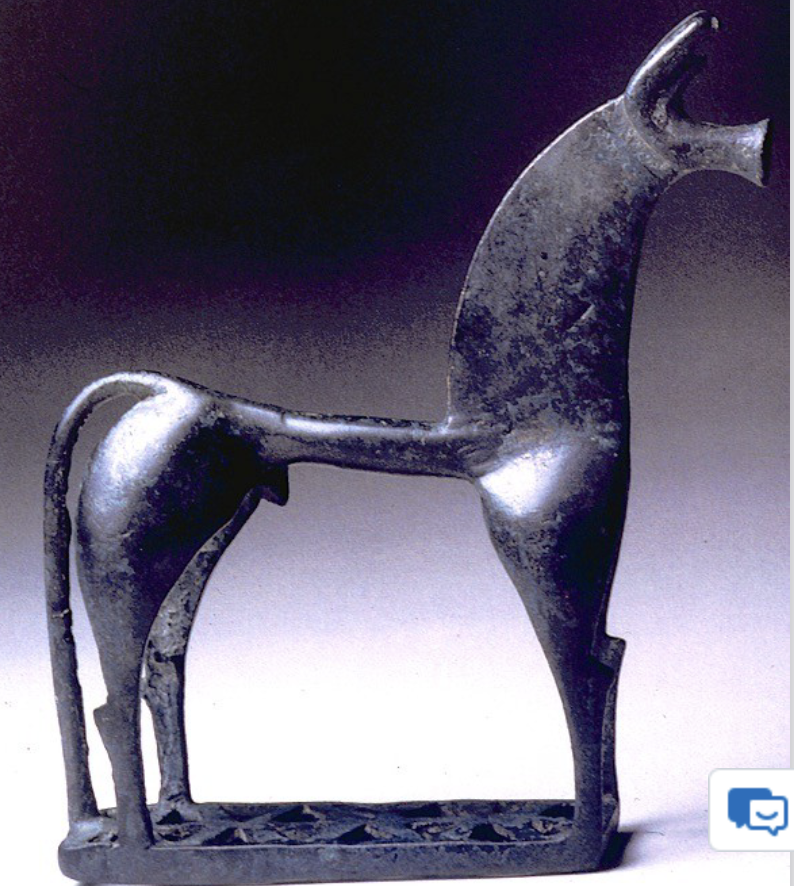
bronze geometric horse in Metropolitan museum of art in N.Y (800 BC)
votive offering
abstracted: long body and leg
horse = status and nobility
looks very similar to horse seen on geometric krate
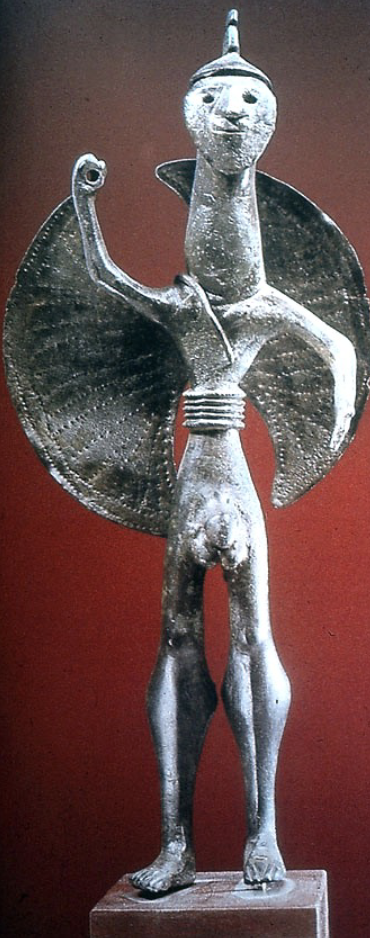
bronze figurine of a warrior from Thessaly (800 BC): northern greece
votive offering
big genitals symbolize heroic masculanity
shield resemble mycenaean shield
same than the warriors seen on geometric krater

bronze spearman from Olympia (750 BC), sanctuary of zeus
sharply trianguar shape of silhouetted figures, same as vase painting
one hand holding spear and one hand holding shield
votive offering to zeus
arete = nobility of character
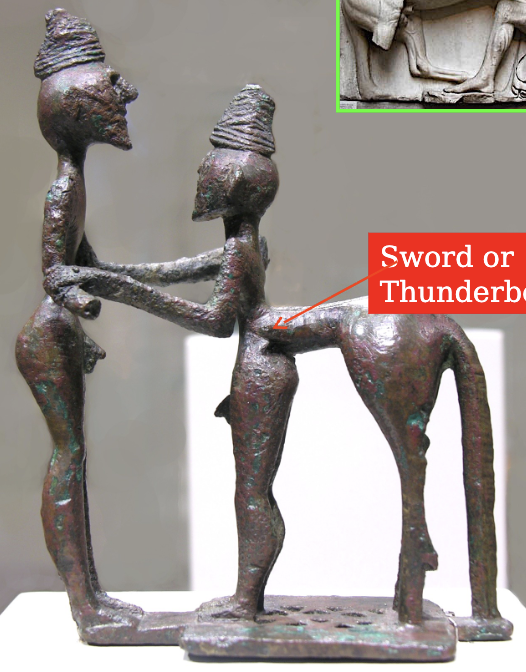
Warrior/centaur group (750 BC)
either zeus battling Chronos, or Herakles fighting Nessos
optimum view = angle which offers the observer the best view for understanding a piece
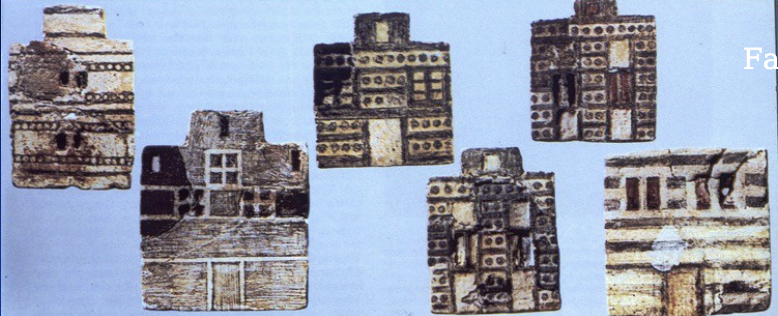
Minoan faience plaque representing Minoan houses (1700-1600 BC)
Faience: glazed type of terra-cotta
votive or achitectural mode
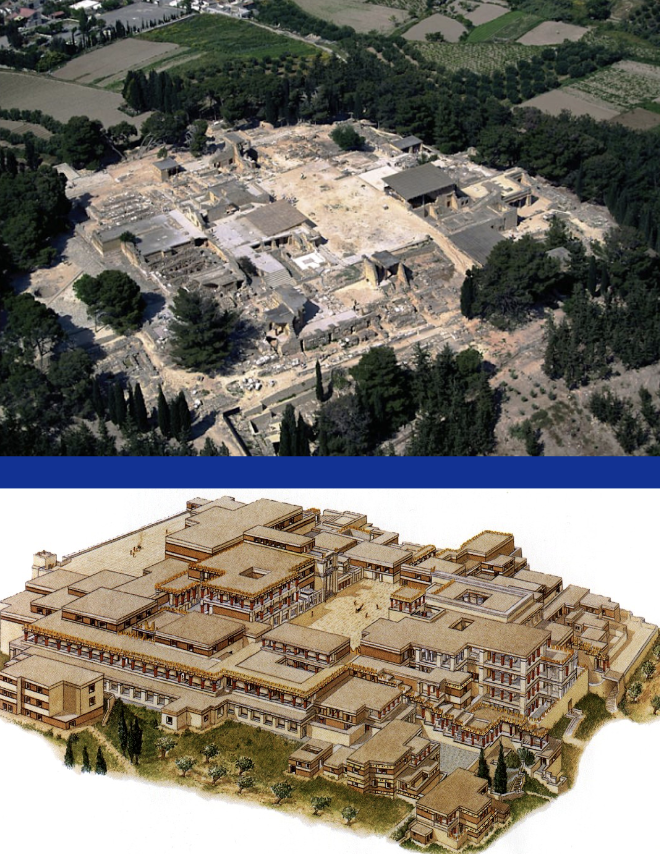
“Great Palace” of Knossos, Crete (1700-1400 BC)
open air courtyard (originally public square?
impression of labyrinth, linked to the legend of Minotau
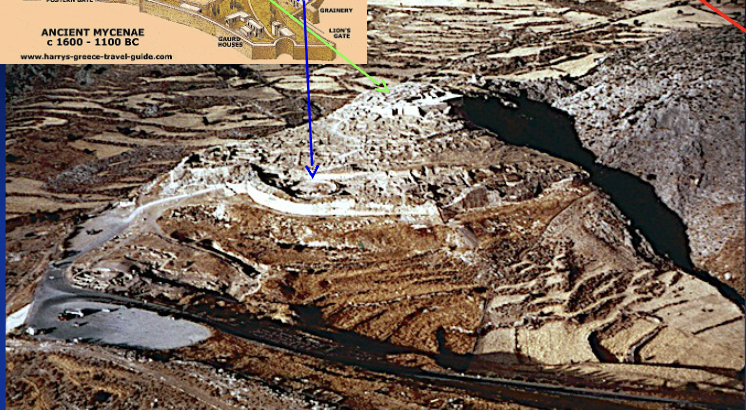
Palace-city of Mycenae (1400-1200) in the Peloponnese
lion gate
central megaron
some minoan elements (megaro, column shapes, but more militaristic)

Palace of Tiryns in the Peloponnese (1400 - 1200 BC)
Cyclopean walls = walls built of huge bloack without use of mortar
corbeled arch = arch formed by two walls of stone or brick on which each course projects beyond the one beneath it, until the two walls meet at the top
megaron = chief room/ “throne room”, of a mycenaean palace, usually preceded by a double columnar porch. had central hearth, rectangular hall, and 4 collumns. had 3 main areas: main chamber, vestibule and two columns in porch
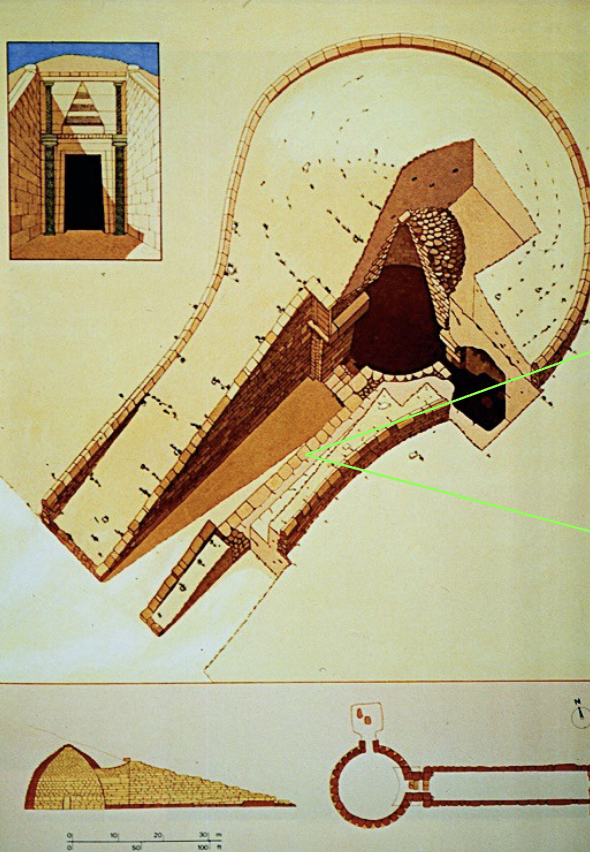
Treasury of Atreus, Mycenaean “beehive tombs” at Mycenea
dromos = long passageway to tomb
tholos = any ciscular structure

Basic plan of an early geometric greek temple
on left, base for a cult image
naos = (lit: “living space”) may be a temple as a whole, or the main cult room of a temple and is equivalent to the latin term cella
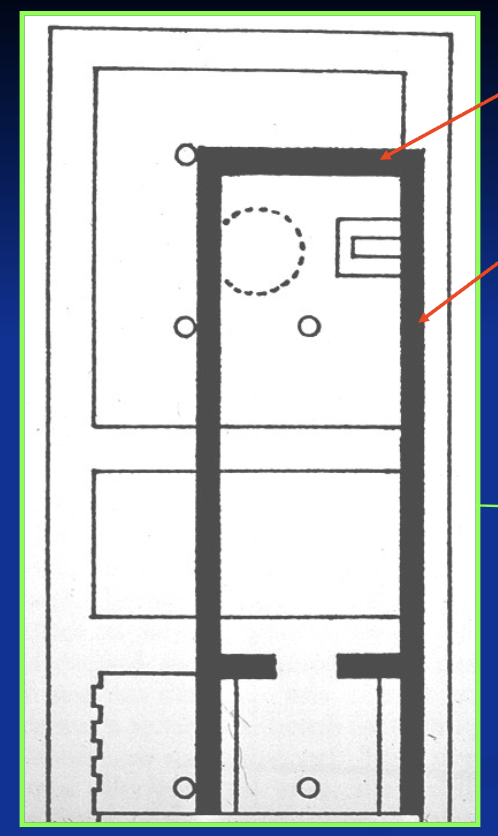
temple of Hera at Tiryns (800 BC): renovated megaron
dedicated to Hera, goddess of marriage and family
transition from megaron to greek temple
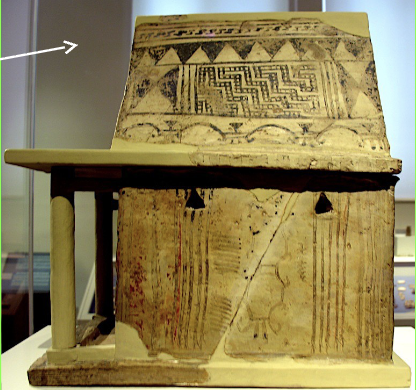
terracotta votive model of a naos from the sanctuary of Hera at Argos in the Peloponnese (800 BC)
Votive offering for hera
rectangular or apsidal = in the form of a curved recess, or aps
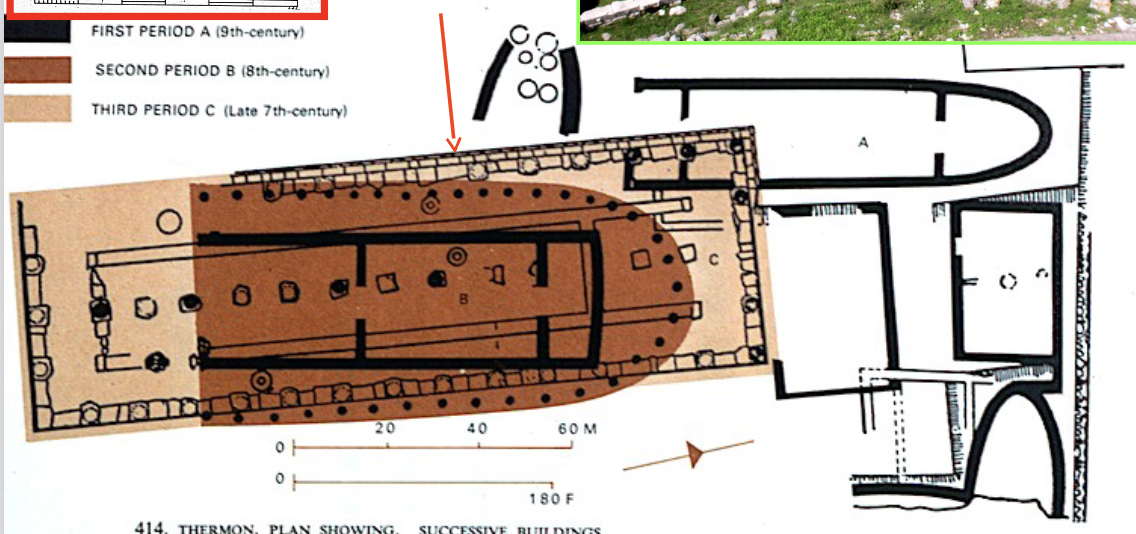
plan of thermon sanctuary building
temple of appolo
Megaron A (900 BC) earlt geometric period
rectangular hall with central focus on cult statue
Megaron B (800 BC): late geometric period/early archaic
larger, apsidal
Megaron C (late 700 BC): early archaic period
much bigger, rectangular
temenos= boundary of sanctuary
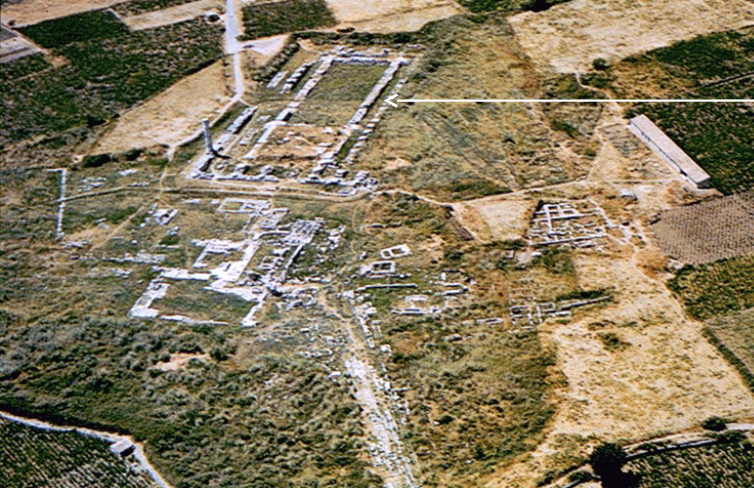
Temple of Hera (Heraion) at Samos (800 BC)
Phase I (800 BC): simple rectangular plan
Phase II (700 BC): addition of pteron, making the temple peripteral (columns around)
hekatompedon: 100 foot long temple